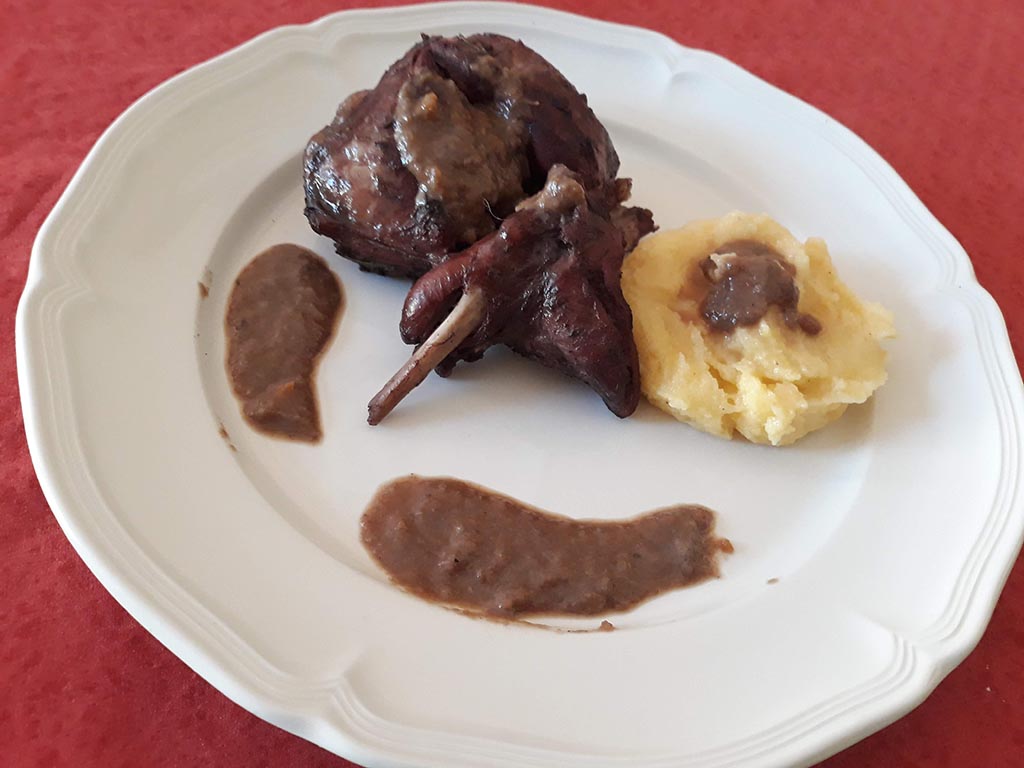
It has a French name for what is a typical dish of Piedmontese cuisine, but it is a fact that they are neighbours who love and hate each other.
The recipe for the hare al Civet, which today has become rabbit al civet, has distant roots and was already enjoyed in the Middle Ages when it indicated a dish cooked with a lot of onion and breadcrumbs to which the animal's blood was then added. In fact, 'civet' comes from the French word 'cipolla', although today it is no longer used to the same extent that it once was.
In some areas this preparation is also called 'in salmì'. One thing is essential: it can be eaten accompanied by the same wine used in the marinade.
But let's get to the modern version with the grey rabbit from Carmagnola, the only Piedmontese native rabbit that was widespread until the 1950s. Then due to the difficulty in breeding this species that does not like to be kept in a cage, but wants to live on the ground (in practice he was a direct heir of the wild hare), it made sure that they gradually disappeared.
Recently, thanks to a genetic recovery from the University of Turin, grey rabbits have returned to the territory of Carmagnola and have also repopulated the countryside. They are medium-sized rabbits with a soft, grey coat with a lighter part in the ears, belly, legs and tail.
Fortunately, also with the help of Slow Food, which protected it, we have returned to breeding it. And the new farms respect the characteristics of these animals that love to feed on grass in open fields.
The Carmagnola grey has very tender and non-stringy meat and a muscle mass superior to the other breeds. Cooked with peppers it was a traditional Piedmontese dish that was found in all taverns while today we will give the recipe for "al civet".
Recipe for Rabbit of Carmagnola "al civet" with spices and polenta
We purchase the rabbit from a quality butcher, wash it and cut it into pieces. Then we put all the pieces in a container with carrots, onion and celery cut into large pieces. Be careful that to obtain a unique flavour, the onion must be stuck with cloves. A sprig of rosemary, sage leaves, bay leaf, cinnamon sticks, parsley leaves are also added.
Then we cover everything with an excellent red wine and leave it to marinate. I used a Barbera d'Asti, the same one I will drink when I eat. The container is closed with a transparent film and put in the fridge for 24 hours and note that after the first twelve hours the meat starts to turn.
After that period, take a pan and put in it some butter and oil and brown the meat. Before browning the meat we filter the marinade liquid, being careful to remove the aromatic herbs, cinnamon and cloves while leaving celery, carrots and onion (which we will add to the meat).
To flavour the rabbit we begin by soaking with the marinating wine before cooking over low heat for 1 hour and 30 minutes.
At the end of cooking, remove the rabbit from the pan and blend the vegetables with the cooking sauce, creating a sauce. We will use this sauce when we put it back in the pot with the rabbit for 5 minutes to flavour it.
We then serve the rabbit with polenta, I used polenta integrale.
And the wine? Obviously in the glass we will drink the same wine with which we made the marinade.








Follow us